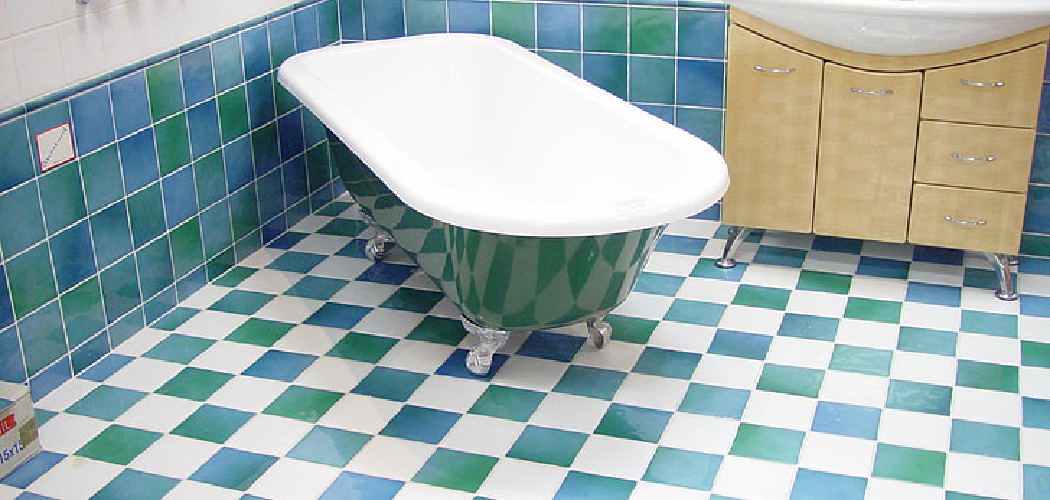Are you looking for a durable and stylish way to update your bathroom floor? Well, look no further! Epoxy is an excellent option when it comes to bathroom floors, as it provides both strength and aesthetic appeal.
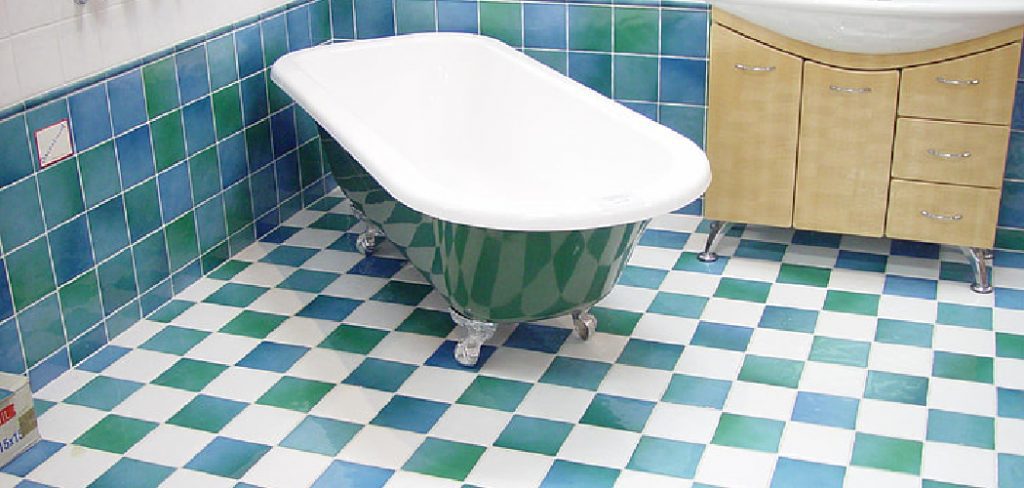
With the right materials and some elbow grease, you can create a beautiful epoxy bathroom floor that will last for years while adding a bit of glamor to your home. Here, we’ll take you through the step-by-step process so that you can get well on your way toward creating the perfect epoxy bathroom experience!
Epoxy floors are the perfect choice if you want a durable and stylish option that will last for years. It offers an easy-to-maintain surface with an attractive finish that’s also waterproof and resistant to scratches.
In this guide, we’ll give you all the information you need to know about how to epoxy bathroom floor correctly. By the end of reading this blog post, you should have all the knowledge necessary for applying your own epoxy bathroom flooring system effectively!
Why May You Want to Epoxy Bathroom Floor?
1. To Protect the Bathroom Floor Against Water Damage
One of the main advantages of using epoxy coatings for bathroom floors is that it helps to protect the floor from water damage. Epoxy is a strong, long-lasting material that acts as a waterproof barrier between the floor and moisture.
This means that you can have peace of mind knowing your bathroom floor will stay in great shape over time. Additionally, epoxy coatings are easy to clean and maintain, making them ideal for places like bathrooms where hygiene is a top concern.
2. To Enhance Aesthetics
Epoxy coatings are also great for enhancing the aesthetic appeal of your bathroom floor. Epoxy comes in many different colors, textures, and patterns, so you can customize your bathroom floor to fit your style. Additionally, epoxy coatings tend to be highly reflective which helps create an eye-catching, modern look.
3. To Increase Durability
Not only is epoxy great for its aesthetic appeal, but it’s also extremely durable and resistant to wear and tear. This makes it a perfect choice for bathroom floors as they are subject to consistent foot traffic and moisture. The epoxy coating helps protect the floor from damage and makes it easier to clean and maintain.
In conclusion, if you’re looking for a way to make your bathroom floor more waterproof, aesthetically pleasing, and durable then epoxy coatings are an excellent option. Keep in mind that using epoxy can be a bit of a labor-intensive process.
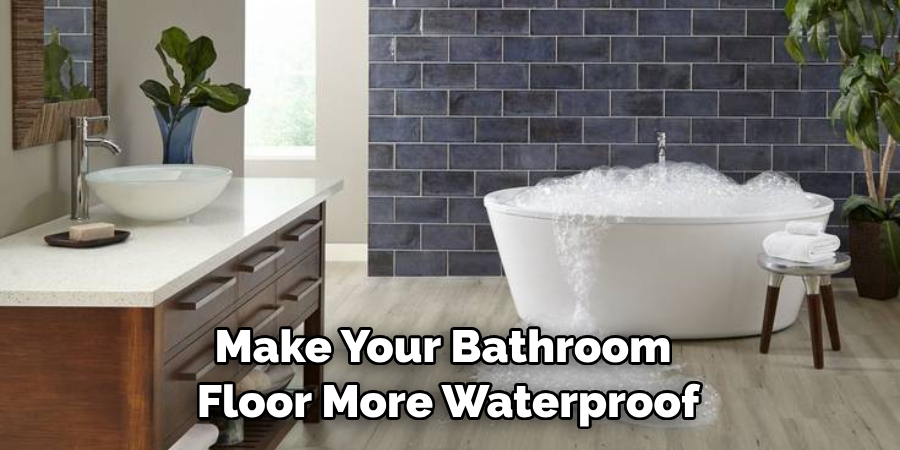
How to Epoxy Bathroom Floor in 6 Easy Steps
Step 1: Gather All The Tools
The very first step is to gather all the necessary tools for the job. This includes a putty knife, sandpaper, drop cloths or old towels, masking tape, mixing sticks and containers, rubber gloves, paint brushes and rollers, and of course epoxy resin and hardener.
Step 2: Clean The Floor Thoroughly
Clean the bathroom floor thoroughly with soap and water to remove any dirt, grime or debris. Allow the floor to dry completely before continuing.
Step 3: Prepare The Floor
Use a putty knife to scrape off any old paint or sealants from the bathroom floor. Make sure you get all of it off so that your epoxy will have a smooth surface to adhere to. Once you’ve removed all the old sealant, use sandpaper to smooth any rough spots.
Step 4: Mask Off The Area
Use masking tape and drop cloths or old towels to cover areas that you don’t want to get epoxy on. This includes walls, sinks, counters, etc. Make sure you have enough drop cloths or towels to cover the entire floor.
Step 5: Mix The Epoxy Resin
Follow the instructions on your epoxy container and mix the resin and hardener together using a mixing stick and container. Make sure you get all of it mixed thoroughly before continuing.
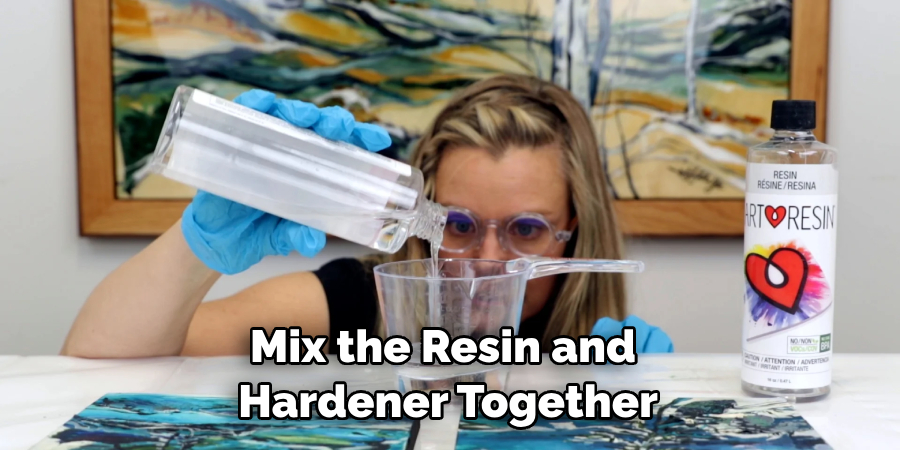
Step 6: Apply The Epoxy To The Floor
Once your epoxy is mixed, use a paintbrush or roller to apply it to the floor in even strokes. Make sure you cover the entire area so that your epoxy will adhere properly and last a long time.
Once you’ve covered the floor with epoxy, allow it to dry completely before walking on it or applying any sealant. Congrats! You now know to epoxy bathroom floor in 6 easy steps. Good job!
Some Extra Tips for Epoxy Bathroom Floor
1. Avoid Using Any Oil-based Products on the Epoxy Floor
One of the most important things to keep in mind when epoxying your bathroom floor is to avoid using any oil-based products on the epoxy surface. This will prevent any chemical reactions that can damage the epoxy and create a weak spot.
2. Wear the Appropriate Protective Gear
It’s also important to wear protective gear such as respirators, safety glasses, gloves, and clothing when epoxying a bathroom floor. This will help to protect against any chemicals or airborne particles that could be harmful.
3. Choose the Right Epoxy for Your Floor
When deciding on the type of epoxy to use for your bathroom floor, it is important to consider the overall purpose and durability you need from the epoxy. Different types of epoxy can provide different levels of durability, so make sure you choose the right one for your purpose.
4. Thoroughly Clean and Prepare the Floor Before Epoxying
Before applying the epoxy, it is important to thoroughly clean and prepare the floor surface. This includes removing any old paint or sealers that may be present and making sure the surface is even and free of any debris.
5. Test the Epoxy on a Small Area First
Before applying epoxy to the entire bathroom floor, it is always best to test the epoxy on a small area first. This will help you determine if there are any issues such as color or texture that need to be addressed before starting the larger project.
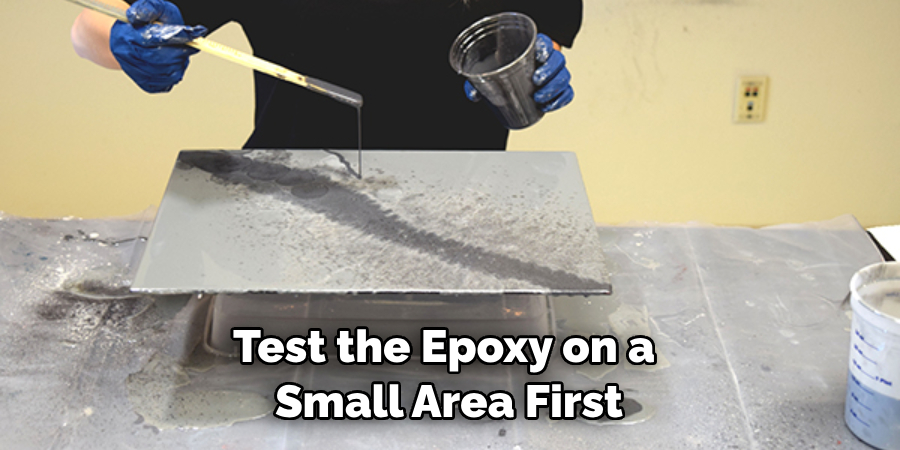
Following these tips will help to ensure that you have a successful project when epoxying your bathroom floor. Remember to take the necessary safety precautions, choose the right type of epoxy for your needs, and thoroughly clean and prepare the surface for the best results. With proper care and maintenance, an epoxy bathroom floor can last for many years.
Frequently Asked Questions
What Precautions should I take in Applying Epoxy?
It is important to wear protective gloves and a respirator mask while applying epoxy. Additionally, make sure that the area is well-ventilated to ensure proper air flow. Make sure all surfaces are clean, dry, and free of dirt, dust or other debris before beginning the application process.
What Steps Should Be Taken to Ensure a Professional Finish?
It is important to follow the manufacturer’s instructions closely and carefully. Before applying epoxy, make sure to clean any existing sealant or grout off of the surface. Additionally, it is beneficial to use a primer before applying the epoxy coatings in order for better adhesion and a smoother finish.
For best results, use a roller or brush to apply the epoxy evenly. For an extra layer of protection, consider applying a topcoat sealer after the epoxy is dry.
Are There Any Safety Measures I Should Take?
Yes, it is important to take safety precautions when applying epoxy in a bathroom environment. Wear protective gloves and eye protection while working with the product, as well as a respirator mask or other breathing protection.
Additionally, make sure the area is well-ventilated for proper air circulation. Avoid putting any open flames in the bathroom while working with epoxy.
Are There Any Potential Problems I Should Be Aware Of?
Epoxy can be quite difficult to remove once it has been applied, so it is important to take precautionary measures before applying the epoxy. Make sure all surfaces are clean and dry, and that any existing sealant or grout has been removed prior to application.
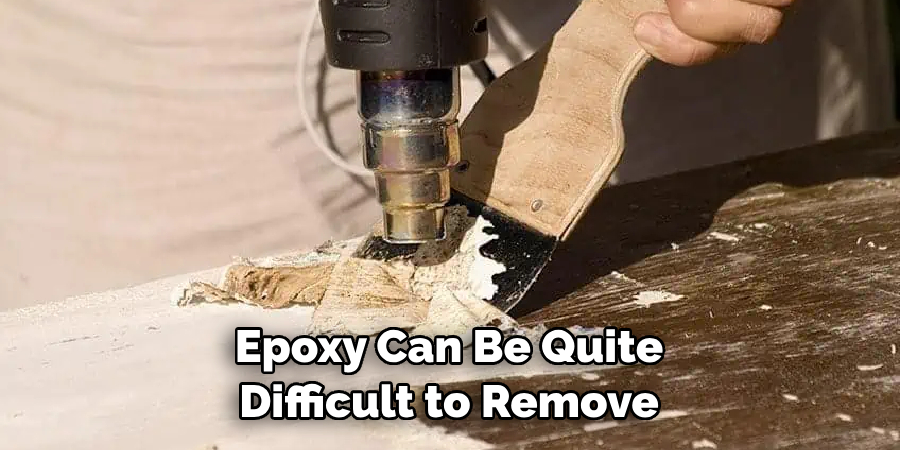
Additionally, it is important to work in a well-ventilated area and to avoid open flames while working with epoxy.
Conclusion
Overall, epoxying a bathroom floor is a great way to make your bathroom look beautiful and refreshed. By following the simple steps outlined in this blog post, you can achieve a beautiful result with minimal effort.
However, it’s important to note that all products used should be marked safe for use in bathrooms and if you are uncertain then consulting a professional is advised.
Now you know how to epoxy bathroom floor! Additionally, be sure to follow any safety guidelines while using epoxy resin so that you stay safe during the process.
With the proper preparation and execution, epoxying your bathroom floor can be an easy home upgrade with long-lasting results. In the end, taking the time to epoxy your own bathroom floor can give you the satisfaction of knowing that you have accomplished something yourself!

